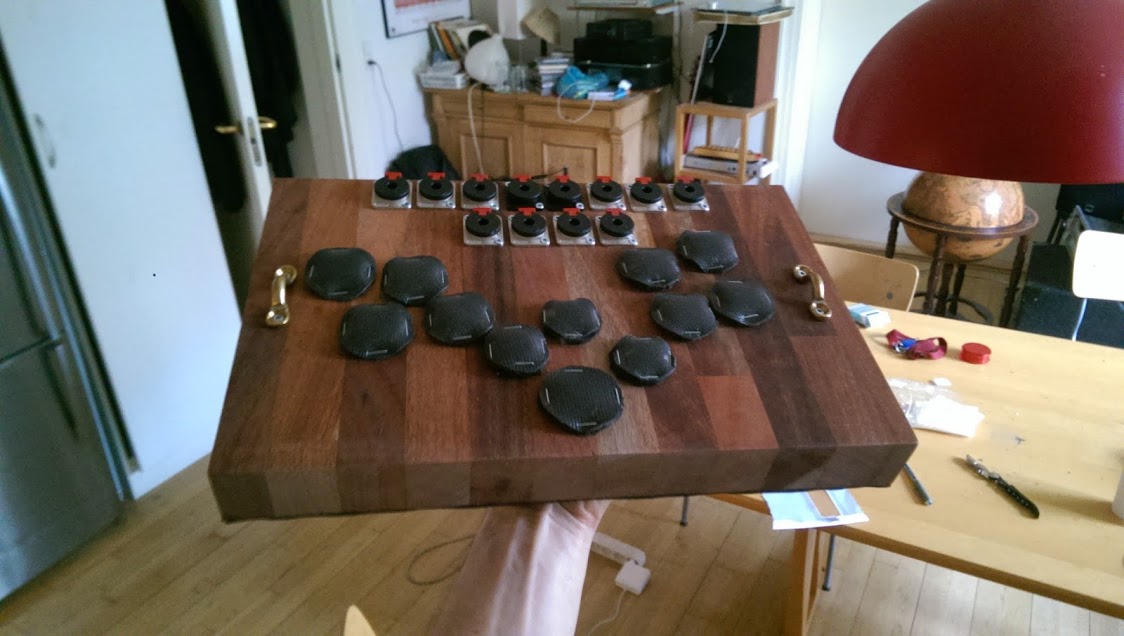
Disclaimer
This instrument was custom made for my specific preferences and therefore it is important that you adapt it for your own ergonomic challenges. However, the process of constructing the instrument and the materials can be used by anyone. Furthermore this how-to guide only explains the manual construction of the drum pad and has no specific considerations for hardware interfaces or software applications (DAWS etc.)
Ergonomics and blueprinting
Being a musician with a physical disability I had one major concern: I had to have as many sound possibilities as possible for my limited physical reach. For a long time I was unsure how to achieve this. I had tried with the Roland SPDS and other pads, however, they are constructed in a very linear and rectangular way with 4 square pads lined up side-by-side in rows of 2 or more. What I noticed when I played these kinds of pads was that my very limited movement did not fit with their lay out.
I had to find out how my arms move in the most comfortable way, therefore I took a sheet of paper (A4) and put it in a horizontal position. Then I tapped my drumsticks and hit the paper in areas were I found it most comfortable. (Thank you to Emil Houmøller Mortensen for the idea of drumming on paper first.) We then drew a mark on all the places were the stick landed on the paper.
We brought the paper with us to a DIY shop and placed it over flight cases of various sizes until we found the one that fit the best. We then had a guy in the wood department cut out a wood block (we found a beautiful piece of cherry wood leftover from a kitchen table) that fitted the suitcase with some space left for the construction on top of the wooden block.















